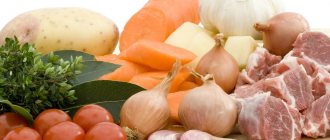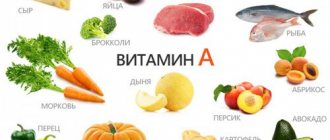Strong bones and teeth: how one of the most essential macronutrients helps us
The main function is participation in the formation of bone tissue. It contains a larger amount of substances on which the harmonious development and functioning of the body depends. Ca is also involved in blood clotting, helps normalize heart contractions, participates in the intracellular delivery of nutrients, and is responsible for regulating the ratio of acid and alkali.
Calcium is called a structural element for a reason - it can be compared to a stone that is embedded in a wall. It maintains the health of our teeth, bones, and strengthens nails. In our body it is presented in two forms. The first is usually called free, and the second bound. If free form Ca reserves are close to zero, we begin to obtain it from bone tissue.
Another important property of this substance is that it helps strengthen the connective tissues of cells and improves our immunity. So you definitely need to drink milk, kefir, and fermented baked milk. But are they the only ones that contain this element with the prefix “macro”?
The many faces of a macronutrient
Of course, the supporting and structural role of calcium is very important, but this is not the only benefit of the mineral. The processes and metabolic reactions in which it takes part are surprisingly diverse. Calcium is one of the important components of the blood coagulation system, determining the activity of at least seven parts of this multi-stage cascade. This mineral is also necessary for muscle contraction, which directly affects muscle strength, heart function, the processes of constriction and relaxation of the walls of blood vessels, and the regulation of blood pressure.
IMPORTANT! Calcium is also important for the effective functioning of the central nervous system, participating in the processes of excitation and transmission of nerve impulses. Determining the activity of a number of enzymes and hormones, it is essential for the functioning of the immune and endocrine systems. At the same time, calcium probably performs the most basic task at the level of each cell of the body: it regulates the processes of growth and differentiation, participates in the formation of intercellular bridges and connections, forming tissues and organs.
This is why the concentration of calcium in the blood, due to its importance for a large number of vital processes, is precisely regulated, and the normal range is quite narrow from 2.16 to 2.51 mmol/l. Strictly maintaining this level is of utmost importance. What fluctuations are acceptable? Very minor - a decrease in concentration by 20% already leads to major disturbances: weakening of muscle tone, increased excitability of the nervous system and even the development of seizures.
What foods contain a lot of calcium?
Before we talk about them, let's talk about the conditions under which Ca will be absorbed best. Let us immediately note what blocks the breakdown processes: food containing oxalic acid. If you eat it and at the same time consume cottage cheese, milk, kefir, you will face the problem of sparingly soluble salts, which can remind you of urolithiasis and are deposited in the intervertebral discs.
It is useful to combine foods containing large amounts of calcium with fatty acids. However, certain precautions must be observed: do not get carried away. Why? The problem is that both a lack and an excess of fat in the body negatively affect the absorption of an important macronutrient - it slows down.
Another tip: add foods rich in vitamin D to your menu. This is another helper of Ca, which helps it get into cells and take part in a number of complex processes. It can be formed under the influence of sunlight, but it is also necessary to obtain it from the diet. Here are the foods that contain calciferol:
- Eggs are one of the simplest and most accessible sources. The concentration of the beneficial substance is especially high in the bright yolk. However, eating too many eggs is harmful because they are high in cholesterol.
- Beef liver is another guest on our table, which contains vitamin D, which helps in the absorption of Ca. And the liver also contains iron and protein - a new argument in favor of inclusion in the diet.
- Soy milk - a cup of this drink has a high content of calciferol. It also contains incredibly useful vitamin C.
- Tuna, salmon - these types of fish are rich not only in the “sun” substance, but also in polyunsaturated fatty acids - a good help for the complete absorption of calcium.
Also, don’t forget about magnesium and phosphorus - they are also vital for obtaining an important macronutrient in full. There are many of them in all kinds of beans, whole grain bread, soybean curd, and cocoa.
Now let's turn to foods that are high in calcium and have great benefits for our health.
- Green leafy vegetables – cabbage comes first. You can safely add Beijing, broccoli, Brussels sprouts to your diet - the treasured Ca will be there everywhere.
- Nuts - you didn’t know, but they also contain building material for nails, teeth, and bones. By the way, they perfectly help the absorption of macronutrients. We all know that these fruits contain a lot of fat under the hard shell. That's what we need. Record holders for the content of useful macronutrients are Brazil nuts and almonds.
- Various seeds - if you were looking for which foods contain calcium and are richest in it, and expected to see only milk and cottage cheese on the list, you will be surprised, because even poppy and sesame seeds contain this valuable substance. You can add them to healthy baked goods made from amaranth flour, and if you are fasting, they will make good milk.
- Wheat – especially high in Ca in bran. But if you decide to look for a macronutrient in premium flour, you’ll just be wasting your time - it’s not there. As in white bread. It’s better to take whole grain bread or buy a good alternative to the usual crust – amaranth bread.
- Tofu - some call this product soy curd, others call it cheese. But whatever you call it, the fact remains: it contains calcium (about 105 mg per 100 g). It is also very good for those losing weight because it contains few calories.
- Herbs - it turns out that they also contain this macronutrient. Most of it is found in parsley. Other herbal ingredients in our menu are not far behind: dill, basil, oregano, mint, nettle.
- Molasses – one teaspoon contains approximately 170 mg Ca. This is no joke: it is also found in sweets. However, we still recommend choosing the beneficial combination of maltodextrin and stevia extract over thick starch syrup.
Also, do not forget about cottage cheese, milk, yogurt, kefir. These are the main sources of useful macronutrients on your table. Lactose, which is part of these components of a healthy diet, helps the valuable substance to be quickly and fully absorbed.
So, we found out which foods contain calcium, and gave a list to explain exactly where it is found. Many discoveries can be called unexpected: it is difficult to imagine that the building material for bones and teeth is found in herbs or seeds. There is a lot of it in figs, green beans and even turnip leaves.
Watercress, savoy cabbage, pistachios, shrimp - all these are irreplaceable sources of Ca in our diet. Below is a table listing foods that contain large quantities of calcium. Check yourself: are they all on your table?
Even if you don’t eat all of the above regularly, there is no reason to worry if you regularly drink a glass of kefir or milk, often buy cottage cheese, red fish, and like green vegetables. In this case, all you have to do is ensure that the macronutrient that enters your body is absorbed correctly. We have already told you which combinations are preferable.
It is not difficult to guess that Ca should help us not only throughout life, but also when life is just beginning. This is exactly what we will talk about next.
Drink milk, children.
Dairy products are the basis of nutrition in childhood. In addition to the high content of easily digestible calcium and phosphorus, it is a valuable source of protein with a complete amino acid composition, milk fat, which contains essential fatty acids, as well as a number of vitamins. In the nutrition of young children, as well as during other periods of intensive growth, the daily amount of dairy products in the diet should be no less than 500 ml per day in the form of whole milk and fermented milk drinks, as well as 50 grams of cottage cheese or cheese. However, all these recommendations will only be relevant for children over one year old. The nutrition of babies in the first year of life has its own characteristics, which are associated with the limitation of the introduction of whole cow's milk.
How does calcium deficiency manifest in the body during pregnancy: symptoms
Experts say that in approximately 17% of cases, calcium deficiency may occur several months before the baby is born. The signs are:
- It feels like goosebumps are crawling all over your body.
- Short-term convulsive twitchings are observed.
- Often cramps the leg muscles.
- A young mother may complain of bone pain.
Most often, these symptoms occur in pregnant women who have suffered complications (preeclampsia). The situation becomes worse with unbalanced and poor nutrition, in spring and winter. By the way, it is during the gloomy and dank months that the concentration of Ca in the blood is lowest, as is the “sunny” vitamin D.
Calcium deficiency can lead to adverse effects:
- increased fragility of bones, their deformation;
- development of complications;
- frequent muscle pain;
- convulsive conditions;
- toxicosis.
For a child, this situation is no less dangerous than for a woman in labor:
- Leads to rickets.
- May cause growth retardation.
Changes in mineral metabolism should not cause a deterioration in the mother's well-being. It is also necessary to prevent their negative impact on fetal development. To do this, create the right diet, be sure to include foods rich in important macronutrients. Every day, be sure to consume either 200 g of cottage cheese (choose one with medium fat content), or a glass of kefir/milk, or about 50 g of low-fat cheese. This is a good protection against the possible consequences of a lack of a valuable substance.
It is also worth including nuts (Brazil, walnuts), cabbage (broccoli, Chinese cabbage), other green vegetables, berries, shrimp and fish in the menu.
And don’t forget: you also need to prevent vitamin D deficiency. Be outside more often, bask in the sun.
Constant update
Many people believe that the human skeleton is a “stone” skeleton that gradually increases its mass as it grows older and undergoes virtually no changes. This is not entirely true. The skeleton, like any other organ, is in constant renewal. Resorption and removal of old, damaged areas of bones and the formation of new young structures occur. In childhood, this process is very intense, and the skeletal system is completely renewed in 1–2 years. The daily amount of calcium intake directly affects the rate of linear growth and bone mineral density, determining the physical development of the child and even the long-term risks of bone fractures in old age.
Why calcium is not absorbed in the body and how to explain its deficiency
It comes in insufficient quantities
Most people who are accustomed to eating in a hurry, on the run, hastily swallowing donuts, pies, hamburgers and other fast food products suffer from this problem. This food lacks both Ca itself and other important micro- and macroelements - its helpers. So the first thing to start with is changing your diet.
Another reason for insufficient calcium intake in the body is the wrong combination of menu components. All useful substances work in some ligaments, but interfere with each other in others. If you consume little selenium, iodine, silicon, magnesium, phosphorus, or take multivitamins erratically, be prepared for the fact that you will sooner or later develop deficiency symptoms.
Its absorption is reduced
Various reasons can lead to this. These include gastritis, stomach ulcers, the presence of excessively fatty foods in the diet, consumption of food high in oxalic acid, and lack of vitamin D. Often the concentration of a macroelement in the blood decreases during menopause, with physical inactivity, and taking diuretics. It is important to find the source of the problem. Only after this is it possible to resolve it.
Increased elimination
Treatment with laxatives and diuretics, bowel cleansing with enemas, and kidney disease can lead to this. After all, it is in the kidneys that vitamin D is converted into a form that allows calcium to be absorbed without problems. This is what removes calcium from the body. Your task is to prevent loss.
Something leads to increased macronutrient consumption
Most often, reserves of an important substance melt by leaps and bounds during pregnancy and lactation, with injuries and fractures, and stress.
These are the main reasons for poor absorption of calcium from food. Take care of your health. Eat right, don’t try to lose weight by taking laxatives and diuretics, move more, spend more time in the sun and fresh air.
Breast-feeding
Mother's milk is the main food product for children in the first year of life. Its composition ideally matches the child's needs and changes dynamically as the baby grows and develops. Breast milk is the main source of minerals in the first half of a baby’s life. The total amount of calcium in human milk is lower than in cow's milk. But thanks to the ideal ratio between phosphorus and calcium, as well as the presence of special proteins that facilitate the transport of minerals through the intestinal wall, their absorption is very high. At this age of the baby, it is very important that the mother’s diet is balanced and rational so that the child receives sufficient necessary substances and maintains the mother’s health. In addition to the daily presence of dairy products in the menu, nursing mothers are recommended to take additional calcium as part of vitamin and mineral complexes. When artificial feeding, it is necessary to give preference to adapted formulas containing lactose for better absorption of calcium and vitamin D.
Products that leach calcium and increase its content
First, let's talk about what prevents us from replenishing reserves of valuable macronutrients:
- Salt – its increased consumption leads to weakening of bone tissue.
- Soda contains phosphoric acid, which leads to an imbalance of acid and alkali.
- Vitamins (especially A) - their indiscriminate use and excess help reduce the concentration of calcium in all tissues of the body.
- Coffee - just drinking one cup of an invigorating drink is enough to deprive yourself of 6 mg of Ca.
- But there are also products that increase the content of the element - we have already talked about them. These are milk, cottage cheese, green vegetables, soybeans and its derivatives, fish.
Little is bad, but too much is no better. Next we will talk about the condition that occurs when more bone building material is obtained than needed, its symptoms and dangerous consequences.
Feeding time
Mother's milk can only meet the baby's needs for the first 4–5 months of life. Then, for normal growth and harmonious development, an additional supply of nutrients, as well as vitamins and minerals, is necessary. In the second half of life, complementary feeding products become a source of calcium. In accordance with modern domestic recommendations for feeding children, it is necessary to avoid the use of whole cow's milk until the age of 1 year. This is associated with a high risk of developing allergic reactions to a foreign protein; in addition, the load on the baby’s immature kidneys increases and there is a risk of damage to the cells of the intestinal mucosa. At this age, the introduction of whole milk can cause disruption of iron absorption in the gastrointestinal tract, the need for which increases significantly in the second half of life. In this regard, specially prepared and adapted dairy products are used in the nutrition of children of this age.
Greenery
Another excellent source of calcium is some leafy vegetables, as well as fresh greens. 100 grams contain:
- sorrel – 47 mg
- cilantro – 67 mg
- rhubarb – 86 mg
- spinach - 106 mg
- leaf mustard – 115 mg
- parsley – 138 mg
- amaranth – 159 mg
In addition, raw turnip leaves and dandelion leaves contain calcium. The most popular green leaf lettuce (lettuce) has approximately 36 mg of calcium, while iceberg has only 18 mg. Among the greens, basil is the leader, containing 177 mg per 100 grams.
Eliminating shortages
Eggshells are 90% calcium carbonate. The body completely absorbs it and converts it into calcium phosphate, which strengthens bone tissue and teeth. The shell also contains phosphorus, copper, zinc, iron, and manganese.
Recipe 1:
- Wash the raw egg, boil the shell for 15-20 minutes, peel off the film. Dry and grind in a coffee grinder.
Use the shells of 3-5 eggs at a time. Afterwards take 1 tbsp. fish oil rich in vitamin D.
Recipe 2:
- Get powder from the shells of three eggs.
- Pour in the juice of one lemon.
- Place on the bottom shelf of the refrigerator until dissolved.
Take 1 tsp. twice a day. The acidic composition facilitates the absorption of the element in the intestines.
Instead of lemon juice, you can use cranberries or other sour berries. To improve the taste, add 1 tbsp. honey
Cereal complementary foods
For babies older than 4-5 months, the source of calcium and phosphorus is specialized industrial products - baby milk porridges. For example, to produce the Bebi Premium line of porridges, milk is used, which is specially adapted for better absorption by the child’s body. The milk for this manufacturer's products is delivered from Danish dairy farms, recognized as the best in the world. The milk component is the highest compared to baby cereals of other brands and does not contain vegetable oils. The last aspect is also very important in the issue of calcium absorption. Palmitic and stearic fatty acids, which are part of a number of vegetable oils, bind to calcium to form insoluble compounds, thereby preventing its absorption.
IMPORTANT! All products of the Bebi Premium line are enriched with a vitamin and mineral premix, which is qualitatively and quantitatively specially selected for better absorption of calcium. Thus, the necessary supply of the mineral consists of the natural content in cereals and the dairy component, as well as due to the additional enrichment of porridge with calcium and vitamin D.
This allows you to make a significant contribution to the child’s daily need for these essential substances.
Menu for every day
We know which foods contain calcium and what helps its absorption. How to put this into practice and get sufficient doses of calcium from food? Let's get a look!
| Breakfast | Dinner | Snack | Dinner |
| 2 eggs, avocado, buckwheat bread, lettuce | shrimps watercress, tomatoes, 30 g tahini, boiled buckwheat | chickpeas or hummus, whole grain bread, green salad | stewed cabbage with carrots and beans, seasoned with Provençal herbs or fresh herbs, sour cream |
You can use a calcium dietary calculator that will help you adequately assess your level and prevent calcium deficiency. Remember that these numbers do not reflect the level of calcium you actually absorb. However, this calculator is a good tool for visualizing your plate formation and estimating your calcium intake. Once you start planning your diet with its help, later you will intuitively understand what to add to the dish to enrich it with calcium.
Daily norm
The daily need for calcium directly depends on the age and gender of a person. Moreover, the largest amount of macronutrients is required by a growing body, pregnant and lactating women.
The daily value of calcium is:
- for newborns up to 6 months – 400 milligrams;
- for preschool children (1 – 5 years) – 600 milligrams;
- for schoolchildren under 10 years old – 800 milligrams;
- for children from 10 to 13 years old – 1000 milligrams;
- for teenagers and young people under 24 years old – 1300 – 1500 milligrams;
- for women (from 25 to 55 years) and men (from 25 to 65 years) – 1000 milligrams;
- for women during menopause (from 55 to 85 years old) and older men (from 65 to 85 years old) – 1300 – 1500 milligrams;
- for pregnant and lactating women – 1500 – 2000 milligrams.
The need for calcium increases with:
- intense sports activities;
- profuse sweating;
- taking anabolic steroids;
- hormonal therapy.
Remember, it is important to monitor the amount of calcium consumed daily, since a lack of the mineral can lead to osteoporosis of the bones, and an excess can lead to stone formation in the kidneys and bladder.











